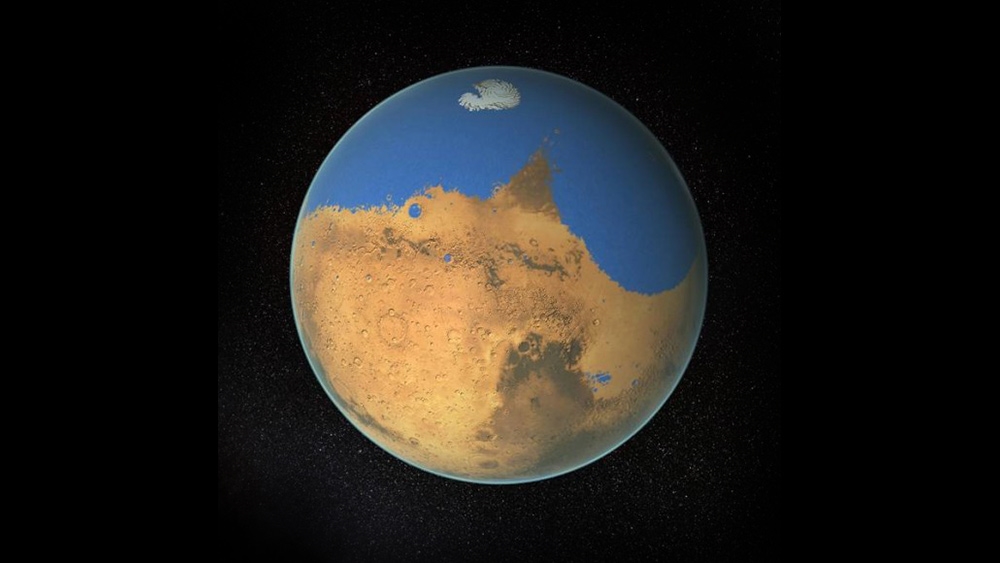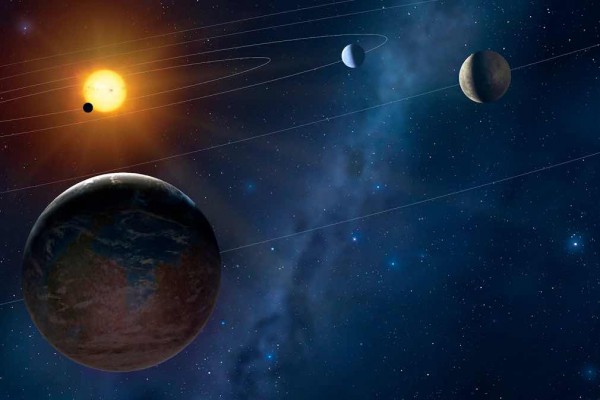The world was captivated with the worldwide announcement that Mars has flowing water on its surface. Now, NASA officials believe the red planet once harbored more water than the Artic Ocean.
Researchers are able to distinguish between two different types of water in Mars’s atmosphere: H20 and HDO. HDO is semi-heavy water and by comparing the ratio between HDO and H20, researchers are able to determine how much water was once on Mars. With the ratio of the two waters, researchers can figure out “how much the fraction of HDO has increased and thus determine how much water has escaped into space.” What remains is the way they are able to determine the amount of water that was once on the red planet.
By studying chemical signatures that water imprinted in Mars’s atmosphere, NASA scientists concluded that the red planet once had a vast amount of water. Approximately 4 billion years ago, Mars had enough liquid water to cover its surface in a layer spanning 140 meters deep. The water most likely formed an ocean that covered half of the planet’s northern hemisphere. Some regions extended 1.6 kilometers in depth.
Based upon observations of Mars’s surface today, the ocean would have likely fallen within Northern Plains because of the low lying ground. The ocean would have covered about 19 percent of the planet’s surface. By contrast, the Atlantic Ocean covers only 17 percent of Earth’s surface.
“Our study provides a solid estimate of how much water Mars once had, by determining how much water was lost to space,” said Geronimo Villanueva, a scientist at NASA’s Goddard Space Flight Center in Greenbelt, Maryland, and lead author of the new paper. “With this work, we can better understand the history of water on Mars.” 1
H20 and HDO
The estimate was derived from detailed observations made at the European Southern Observatory’s Very Large Telescope in Chile, and the W.M. Keck Observatory and NASA Infrared Telescope Facility in Hawaii. The researchers were able to distinguish between two different types of water that cloud the planet’s’ atmosphere: H2O and HDO (a form of water that contains a larger than normal amount of the hydrogen isotope deuterium.)
The researchers compared the ratio of HDO and H2O in water on Mars today with the ratio of molecules that were trapped inside a meteorite which landed on Earth 4.5 billions years ago. They then measured changes in Mars’s atmosphere to determine how much water had escaped into the atmosphere. The calculations reveal that the planet must have been bathed in water nearly 4 billion years ago.1
Special attention was given the north and south poles of Mars, since they are home to the planet’s largest water reservoir. The water stored there is believed to be a reflection of Mars’s evolution during the Noachian period; the Noachian period refers to the formation of the oldest extant surfaces of Mars which began about 4.1 billion years ago and ended 3.7 billion years ago.
“With Mars losing that much water, the planet was very likely wet for a longer period of time than was previously thought, suggesting it might have been habitable for longer,” said Michael Mumma, a senior scientist at Goddard who is also named second author on the study.1
Looking for signs of life
The most interesting conclusion isn’t so much that Mars once harbored a rich supply of water, but that it was habitable for so long.
But where did all that water go? Scientists believe that Mars lost nearly 87 percent of its water to space, largely due to losing most of its atmosphere. It’s possible that Mars once contained even more water than these estimates suggest, much of which has been deposited deep below its surface.
A Mars lander mission called InSight is expected to look into the deep interiors of the red planet in 2016. NASA hopes to set foot on Mars by 2030. Whether or not man will be the first form of life to set foot on the rocky terrain remains an open question.
Sources include:
(1) Eso.org
(2) Fox59.com
(3) sci.esa.int
(4) EarthSky.org
















